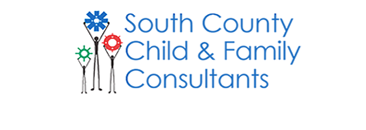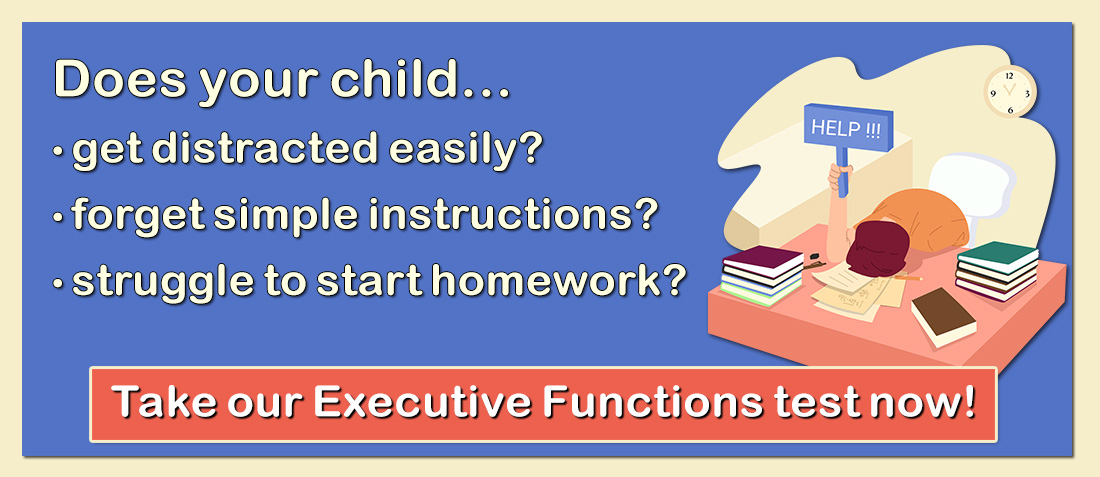 Flexibility is the capacity to switch one’s thinking based upon the demands of a situation. It incorporates the ability to adapt and improvise one’s emotional and cognitive responses based upon changes and transitions in one’s environment. When using flexibility, one must recognize the need to utilize different problem-solving strategies and to take reflective, careful approaches based on previous attempts. Improve flexibility by trying new and novel activities.
Flexibility is the capacity to switch one’s thinking based upon the demands of a situation. It incorporates the ability to adapt and improvise one’s emotional and cognitive responses based upon changes and transitions in one’s environment. When using flexibility, one must recognize the need to utilize different problem-solving strategies and to take reflective, careful approaches based on previous attempts. Improve flexibility by trying new and novel activities.
Flexible thinking helps you learn from mistakes. Cognitive and emotional flexibility helps children to find effective problem-solving strategies and deal with uncertainty. Flexibility is important for a child to be able to transition from one activity to another and helps a child deal with new or different situations.
Home and School Situations Requiring Flexibility
- Receiving constructive criticism
- Trying out new activities or tasks
- Shifting from playing with friends to going home for dinner or homework
- Handling frustrations while attempting to complete a task
- Losing a game or facing disappointment
- Transitioning from one classroom activity to another
- Adjusting to a change in routine, such as having a substitute teacher or babysitter
Hints and Strategies to Improve Flexibility
1. Practice trial-and-error learning. Do something with your child in which it is clear that there is no right or wrong answer. For example, rearrange the books on a bookshelf to see how they look best, work on a flower arrangement, or try variations in making a smoothie or ice cream shake.
2. Play games that are strictly chance. These include flipping coins, playing “war” with a deck of cards, or playing any number of board games that do not rely upon skill, such as “Candy Land” or “Chutes and Ladders.”
3. Ask your child to help you learn how to use a new cell-phone, a new game, or piece of software that you have just bought. Compliment your child’s willingness to make errors, try new things, and learn from his mistakes when engaged in this type of activity. Engage in a discussion as to how this applies to many other things in the real world.
4. Try new things. For example, have everyone in the family try something new at a restaurant, take a new route to school, or try a new routine at home. Discuss with your child the pros (e.g. broadening one’s perspective, finding a better way) and cons (e.g. discomfort, fear) of new experiences.
5. Turn your day upside-down. Have chicken, salad, rice, and vegetables for breakfast and cereal and milk for dinner. Wear pajamas during the day and sleep in jeans and a T-shirt, all the while laughing and being comfortable with this unusual routine.
6. Encourage thinking about things differently. For example, see if you and your child can generate alternative uses for common household items. Discuss how many ways you could use a telephone book, (such as a seat booster, a doorstop, a fire starter, or to look up phone numbers).
7. Encourage game play that requires flexibility of thinking. Many games, such as “Risk” or “Blokus,” involve strategies that require cognitive flexibility in response to changes on the board and the actions of one’s opponents. Similarly, many single player video games change the skills needed from one level to another. For example, during the first level of a game, one may simply need to run and jump to get from one place to another, however, on subsequent levels this method may be inadequate and one will need to think of alternative strategies to be successful. Encourage your child to recognize the need for change in strategy in these games and discuss together how he can apply this sort of flexibility to his daily life.
8. Ask your child for help while you play a video game that requires changing strategies. Many online video games, such as “Diner Dash,” require changing strategies as one moves along in the game. These are relatively simple games for parents to use, but may become difficult as the game progresses. You will need to find new solutions to different problems, and this is an opportunity for your children to help you. The goal is to get your child not only to help you, but to explain how and why he shifted his thinking from one set to another. The focus is to help your child recognize the changing of thinking sets in game play and how this may help them in the real world.
9. Model flexibility in your daily routine. Everyone experiences the common occurrences of running out of an ingredient for a recipe, having plans ruined by the weather, or being called to stay late at work during an emergency. These are all opportunities for displaying flexibility of thinking and approaches. When these circumstances arise, model your capacity to adapt and change. For example, while you adapt, talk about how you will make something different for dinner or how you will find something to be happy about when you change your plans from going to the beach to a movie.
Games and Activities That Can Practice Flexibility
“MadLibs” Books – This interactive game helps your child to both practice grammar and to recognize that sometimes nonsense and silliness are acceptable.
“Big Brain Academy” – Big Brain Academy offers your child the opportunity to test his/her “brain” abilities in five different categories by playing 15 mini-games. This allows him/her to practice adapting to varying routines.
“Bejeweled” – This puzzle game (commonly available on the Internet) allows your child to practice trial-and-error learning and problem-solving skills in order to perform well in the game.
“Chess” and “Checkers” – Traditional board games, such as “chess” and “checkers,” will allow your child to practice flexibility when he must react and adapt to his opponent’s moves.
“Charades” and “Guesstures” – The traditional word guessing game and its modern-day equivalent, “Guesstures,” will allow your child to practice laughing at him/herself, use trial-and-error learning, and constantly adapt to the situation at hand.
Cooking – Cooking, especially when one does not follow a recipe, allows your child to practice problem-solving and trial-and-error learning as he/she creates a hopefully edible concoction.
Construction around the house – Like cooking, construction around the house, particularly when one does not have a kit or detailed set of instructions for a project, allows for your child to practice problem-solving and trial-and-error learning.
Rearranging the furnishings in a room – By rearranging the furnishings in your home, your child will have the opportunity to try and adapt to new things.
Websites on Flexibility
LearningWorks For Kids: The premier resource for executive function information. “LearningWorks for Kids” offers a detailed explanation of flexibility, tips for parents, and activities to improve this skill.
National Middle School Association: A compilation of tips for parents of children who are transitioning from elementary school to middle school.
Scholastic: Author provides a variety of outdoor problem solving activities that can be used with children of different ages.
Books and Articles on Flexibility
ADHD, Executive Function & Behavioral Challenges in the Classroom: Managing the Impact on Learning, Motivation and Stress by Cindy Goldrich, EdM, ADHD-CCSP & Carly Goldrich, BS, Ed (Ch.2) “Take advantage of the latest brain research and evidence-based best practices to get kids motivated, focused, organized and performing closer to their real potential.”- Amazon
Boosting Executive Skills in the Classroom: A Practical Guide for Educators by Joyce Cooper-Kahn and Margaret Foster. (Ch.7) “A guide for helping students with weak Executive Function skills to learn efficiently and effectively” -Amazon
Brain Hacks: Work Smarter, Stay Focused, and Achieve Your Goals by Lara Honos-Webb, PhD. (Ch.4) “Filled with actionable strategies proven to improve focus, increase productivity, and promote well-being, Brain Hacks will help you transform the way you work, live, and feel by tapping into the power of your executive functioning skills.” – Amazon
Executive Functioning Skills Printables Workbook: For Students Learning Life Skills S.B. Linton (Pg.57-86) “For teens and youth with special needs. These are Executive Functioning Skills Printables Worksheets for Students with Autism, Similar Special Needs, ADHD, LD and Executive Functioning Needs.”- Amazon
Executive Functioning Workbook for Kids: 40 Fun Activities to Build Memory, Flexible Thinking, and Self-Control Skills at Home, in School, and Beyond by Sharon Grand, PhD, BCN. (Ch.5) “Help kids grow their executive functioning skills with activities for ages 6 to 9!”- Amazon
Fighting Invisible Tigers: Stress Management for Teens by Earl Hipp. (Ch.8) “Fresh edition of a popular title offers teens straightforward advice on stress management, anxiety reduction, and digital well-being.”- Amazon
Raising Independent, Self-Confident Kids: Nine Essential Skills to Teach Your Child or Your Teen by Wendy L. Moss, PhD, and Donald A. Moses, MD. (Ch. 3) “In this book, child development experts Wendy L. Moss, PhD, and Donald A. Moses, MD, examine the key skills parents need to help their kids emerge as confident, and capable adults.”- Amazon
Smart but Scattered: The Revolutionary “Executive Skills” Approach to Helping Kids Reach Their Potential by Peg Dawson, EdD, and Richard Guare, PhD (Ch.19) “Small changes can add up to big improvements–this empowering book shows how.”- Amazon
The Conscious Parent’s Guide To Executive Functioning Disorder by Rebecca Branstetter, PhD (Ch.9) “With the strategies and advice in this guide, you and your child will build sustainable bonds, develop positive behaviors, and improve executive functioning skills for life.” – Amazon
The Everything Parent’s Guide to Children with Executive Functioning Disorder: Strategies to help your child achieve the time-management skills, … needed to succeed in school and life by Rebecca Bransetter, PhD. (Ch. 10) “The vital skills children need to achieve their full potential!” – Amazon
Train Your Brain for Success: A Teenager’s Guide to Executive Functions by Randy Kulman, Ph.D. (Ch. 8) “ Beginning with a test to determine executive-functioning strengths and weaknesses, the book then explores in detail eight distinct sets of skills, including planning, organization, focus, time management, self-control, memory, and self-awareness.”- Amazon
Videos On Flexibility
What are Executive Function Skills? This is a 5 minute coaching video of executive functions from Beyond Booksmart. This can help parents understand EFs and how coaching might be helpful. For adults.
Executive Functions Superheroes: Building Strategies for Success (Virtual Tour) This is a short video about EFs that could be applied in the elementary school classroom setting. For teens and adults.
Executive Function Skills A lengthier video featuring Ellen Galinsky, author of Mind in the Making. This video is very informative and explains the concepts of EFs in an easy to understand way. For adults.
Receive online class information and helpful tips from Dr. Randy Kulman's LearningWorks for Kids |



